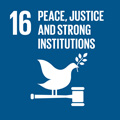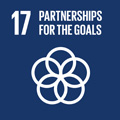- Docente: Luca Colliva
- Credits: 6
- SSD: L-OR/16
- Language: Italian
- Teaching Mode: Traditional lectures
- Campus: Ravenna
- Corso: Second cycle degree programme (LM) in History, preservation and enhancement of artistic and archaeological heritage and landscape (cod. 9218)
-
from Jan 27, 2025 to Mar 04, 2025
Learning outcomes
The course aims to provide students with the critical tools necessary to move in the complex field of archaeology pre-Islamic historical India, through detailed study of a monographic theme, different from year to year, faced by direct examination of historical, literary and archaeological sources, considered the critical perspective of scientific research. After completing the course, the student, in addition to the specialist knowledge of the monographic theme treated, is able to deal with critical sense the vast bibliography on pre-Islamic Indian archaeology and organize with rigorous methodology the sources for a archaeological research.
Course contents
The course concerns a single theme of the archaeology of India, studied in a more detailed monographic approach, with a particular concern towards critics and methodology.
The theme of the 2024-25 course is: " A Critical Introduction to the Study of Gandhara Art ".
The course will provide a concise overview of the challenges associated with studying Buddhist artistic production, known as the "Art of Gandhara." Specifically, it will examine available archaeological and bibliographic data and key iconographic elements that define this artistic tradition.
The monograph section of the course will be preceded by an introduction to the geography, history, culture, and religions of ancient India to ensure the basic knowledge necessary for a full understanding of the topics covered in the monograph study.
For better adherence to the methodological perspective of the course of study, some hours will be dedicated to the history of research in order to introduce students to the main figures in archaeological research.
Additionally, other hours will be dedicated to understanding the main institutions responsible for the protection of cultural heritage in the area and the major local and international archaeological collections, thus illustrating, through concrete examples, the issues of preservation and enhancement of cultural heritage in the Indo-Pakistani subcontinent.
Main Topics of the course:
- Geographical, historical, cultural and religious overview of Pre-Islamic India.
- Overview of the history of archaeology in India: the Archaeological Survey of India and major archaeological expeditions of the 20th and 21st centuries. Presentation of some emblematic sites. Protection of the archaeological heritage in the Indo-Pakistan subcontinent.
- The main archaeological collections in the subcontinent, in Italy and in the world.
- Introduction to Buddhist art and architecture and presentation of some emblematic sites.
- The aniconic representation of the Buddha.
- The Art of Gandhara and the School of Mathura.
- The archaeological site of Taxila.
- The archaeological site of Butkara I and the stylistic groups identified by D. Faccenna.
- The archaeological site of Saidu Sharif and the narrative frieze of its Stupa.
Readings/Bibliography
For an introduction to the pre-Islamic Indian archeology:
M. Taddei, India Antica (Le Grandi Civiltà), Milano, 1972, pp. 1-174.
C. Lo Muzio & M. Ferrandi (eds), “Buddha”, “Ashoka”, “Menandro”, “Kanishka”, “Gupta”, “Veda”, “Cosmo”, “Buddhismo”, “Jainismo”, “Induismo”, “Brahma”, “Shiva”, “Vishnu”, “Sarasvati”, “Durga”, “Lakshmi”, “Epica”, “Purana”, “Tempio Hindu”, “Stupa”, “Monastero Buddhista”, “Dharma”, “Scritture”, “Lingue”, “Yama”, “Samsara”, “Lomash Rshi”, “Sanchi”, “Taxila”, “Butkara”, “Mathura”. “Ajanta”, “Carta geografica del Subcontinente indiano”, “Cronologia”, “Musei”, “Glossario”, in India. Milano, Electa, 2008, pp. 10-33, 74-80, 86-140, 143-157, 174, 182-184, 212-214, 244-264, 270-280, 374-380.
Monographic section:
A. Filigenzi, ‘L‘arte del Gandhāra’ e ‘L'area sacra di Butkara I’, in A. Invernizzi (ed.) Sulla via di Alessandro da Seleucia al Gandhāra, Milano, 2007, pp. 229-244.
D. Faccenna, "Il fregio dello Stupa Principale di Saidu Sharif I: il Maestro di Saidu", in Il maestro di Saidu Sharif, Roma, 2002, pp. 127-136.
D. Faccenna & P. Callieri, "L'area sacra buddhista di Saidu Sharif I", in Il maestro di Saidu Sharif, Roma, 2002, pp. 121-126.
A. Filigenzi. “Ananda and Vajrapani: An Inexplicable Absence and a Mysterious Presence in Gandharan Art.”, in P. Brancaccio & K. Behrendt (eds) Gandhãran Buddhism: Archaeology, Art, Texts. Vancouver, 2006, pp. 270–285.
---
For those not attending lessons, the following bibliography is added:
For an introduction to the pre-Islamic Indian archeology:
AA. VV., “La regione dell'Indo”, “Swat”, “Gandhara”, “Panjab”, “Sind” “Bir-kot-ghwandai”, “Butkara”, “Charsada”, “Taxila”, “La pianura gangetica”, “Mathura”, “Sonkh”, “Bengala”, “Orissa”, “La regione dei Vindhya e il Rajasthan”, “Maharashtra e Gujarat”, “La frontiera Indo-Iranica”, “Bamiyan”, “Fondukistan”, “Hadda”, “Tapa Sardar” in Enciclopedia Archeologica, III. Asia, Roma, Istituto della Enciclopedia Italiana Treccani, 2005. pp. 505-510, 511, 512-514, 516-520, 527-528, 534, 535-536, 539-542, 545-547, 556-557, 580-582, reperibili anche sul sito internet della Treccani (www.treccani.it.)
Monographic section:
C. Pieruccini, "IV. La raffigurazione del Buddha e degli dèi", in L’arte dell’India. Vol.I , Torino, 2020.
M. Taddei, Arte narrativa tra India e mondo ellenistico, Roma, IsMEO, Conferenze 5, 1993.
However, it is strongly recommended that non-attending students contact the teacher to arrange a specific programme and bibliography.
---
Among the texts used for preparing the lectures, which are useful for personal in-depth study but NOT REQUIRED FOR THE ORAL EXAM, the following are noted:
Aśvaghoṣa, Le Gesta del Buddha, a cura di A. Passi, Milano, 2000 (1a edizione 1979).
M. Bussagli, L’arte del Gandhāra. Torino, 1984.
L. Colliva, ‘The Apsidal temple of Taxila. Traditional hypotheses and new possible interpretations’, in A. Hardy (ed.) The Temple in South Asia, London, 2007, pp. 21-27.
L. Colliva, ‘The Excavation of the Archaeological Site of Barikot (Bīr-kot-ghwandai) and its Chronological Sequence’, in Journal of Asian Civilizations, 2011, 34/1, pp. 157-91.
L. Colliva, 'Sanctuaries and ʻdynastic cultsʼ in the Indo-Iranian world: Arsacid, Indo-Parthian and Kushan evidence', Parthica, 2018, 20, pp. 89-110.
G. Erdosy, ‘Taxila: Political History and Urban Structure’, in M. Taddei & P. Callieri (eds) South Asian Archaeology 1987, Roma, IsIAO, 1990, pp. 657-674.
J.M. Kenoyer, Ancient Cities of the Indus Valley Civilization, Oxford, 2004 (1a edizione 1998).
C. Lo Muzio, Archeologia dell'Asia centrale preislamica. Dall'età del Bronzo al IX secolo d.C., Firenze, 2017, pp. 117-149.
L.M. Olivieri, ‘Outline History of the IsIAO Italian Archaeology Mission in Pakistan (1956-2006)’, East and West, 2006, 56, 1-3, pp. 23-41.
C. Pieruccini, L’arte dell’India. Vol.I , Torino, 2020.
M. Taddei, India (Archaeologia Mundi, Enciclopedia Archeologica), Ginevra, 1976.
G. Verardi, ‘The Kusāna Emperors as Cakravartins, Dynastic Art and Cults in India and Central Asia: History of a Theory, Clarifications and Refutations’, East and West, 1983, 33, 1-4, pp. 228-230, 232-237.
The list of texts for personal in-depth study will be updated during the course or, upon request, during office hours
Teaching methods
Frontal lessons with direct and critical examination of the archaeological, bibliographic and iconographic documentation through the projection of images, texts and plans (when possible, also made available on the Virtuale platform).
The aim of the course is to introduce students to the main issues of the proposed research topic. Emphasis is placed on the methodological approach to the research to stimulate critical reflection by the student.
Assessment methods
The examination consists of an oral interview to assess the critical and methodological skills matured by the student and the acquisition of basic knowledge in the field of Indian archaeology.
The evaluation will take into account the student's ability to orientate within the sources and the bibliographic material in order to obtain useful information that will enable him to explain themes and problems and to know how to connect them.
In addition to the contents, students will be evaluated on the ability to synthesize and analyse archaeological themes and the ability to express themselves adequately and with appropriate language.
Full acquisition of these skills and an exhaustive knowledge of the matter will be assessed with excellence marks (27-30).
A predominantly mnemonic acquisition of course's contents and discontinuous language and logical skills will be assessed with discrete marks (24-26).
A minimum level of knowledge of the course contents combined with training gaps or inadequate language and logical skills will be evaluated with marks slightly above the sufficiency (18-24).
The absence of a minimal acquisition of the course contents combined with inadequate verbal expression and logical skills will be considered insufficient.
Teaching tools
Dr Colliva will make available on the 'Virtuale' platform texts, images, and supplementary teaching materials.
Students who, for reasons dependent on disabilities or specific learning disorders (DSA), require compensatory tools may inform the lecturer of their needs so that they can be directed to the contact persons and agree on the most appropriate measures to be taken.
All students who feel the need for materials preparatory to the course are invited to contact the lecturer for appropriate support.
As a possible facultative supporting bibliography we recommend:
C. Lo Muzio & M. Ferrandi (eds), India. Milano, Electa, 2008.
C. Pieruccini, L’arte dell’India. Vol.I , Torino, 2020.
M. Taddei, India (Archaeologia Mundi, Enciclopedia Archeologica), Ginevra, 1976.
Office hours
See the website of Luca Colliva
SDGs




This teaching activity contributes to the achievement of the Sustainable Development Goals of the UN 2030 Agenda.
